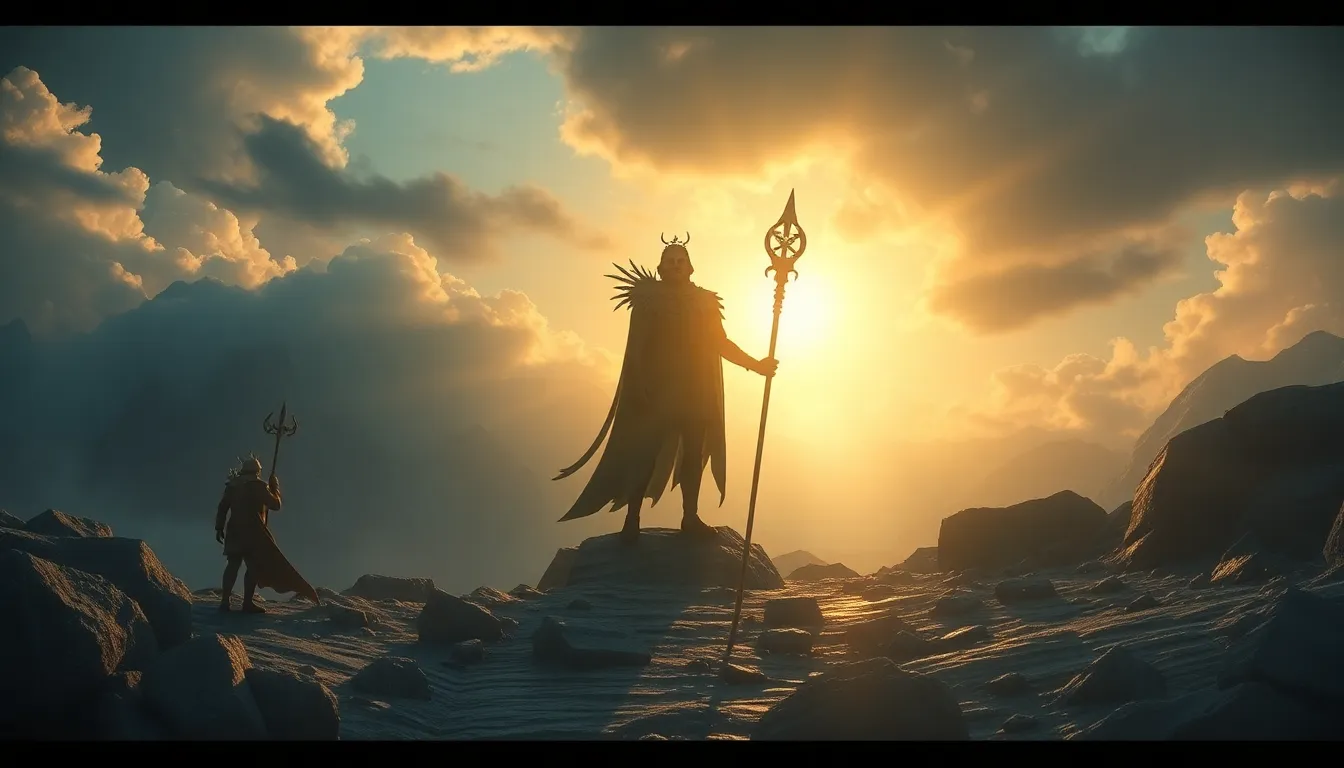The Mythic Quests of the Underworld: Journeys of the Damned
1. Introduction: The Underworld in Mythology
The concept of the Underworld has been a significant aspect of various mythologies across cultures. It represents not just a physical place where souls go after death, but also a realm rich with symbolism and meaning. The Underworld often embodies the fears, hopes, and moral dilemmas faced by humanity. Central to many myths are journeys of the damned—those who traverse this dark domain, either seeking redemption or facing eternal punishment.
2. Historical Perspectives on the Underworld
Throughout history, ancient civilizations have offered diverse interpretations of the afterlife and the Underworld. The Egyptians believed in a richly detailed afterlife where the soul would face judgment, while the Greeks depicted the Underworld as a shadowy place ruled by Hades. Key texts, such as the Epic of Gilgamesh, Homer’s “Odyssey,” and the Egyptian Book of the Dead, have deeply influenced our understanding of these mythic landscapes.
3. Notable Myths and Legends of the Underworld
Many prominent mythological narratives center around the Underworld, showcasing its dark allure and terrifying power. For example:
- Greek Mythology: In this tradition, the Underworld is ruled by Hades, where souls are judged and sent to either Elysium or Tartarus.
- Roman Mythology: The Roman equivalent, Dis Pater, presides over a similar realm, reflecting the Romans’ adaptation of Greek myths.
- Egyptian Mythology: The journey through Duat involves navigating various challenges and facing the judgment of Osiris, where the heart is weighed against a feather.
In these tales, gods and deities often play crucial roles, guiding or punishing souls based on their earthly deeds.
4. The Hero’s Journey: Seeking Redemption in the Underworld
The theme of the hero venturing into the Underworld is prevalent across cultures. Characters like Orpheus and Aeneas exemplify this quest for redemption:
- Orpheus: His descent into the Underworld to retrieve Eurydice symbolizes love’s power and the peril of hope.
- Aeneas: In Virgil’s “Aeneid,” his journey through the Underworld reveals prophetic visions and the weight of destiny.
These quests often signify personal growth, illustrating how confronting darkness can lead to enlightenment and transformation.
5. The Role of Trials and Tribulations
Souls in the Underworld frequently face trials that test their character and resolve. Common challenges include:
- Confrontation with past deeds.
- Interactions with guardians, such as Charon or Cerberus.
- Navigation of treacherous landscapes, like the River Styx or the fields of Asphodel.
These tribulations serve as allegories for moral and ethical lessons, emphasizing the importance of accountability and growth.
6. The Iconography of the Underworld
The Underworld has been depicted in art across various cultures, often characterized by specific symbols and motifs:
- Rivers: Such as the Styx, symbolizing the transition between life and death.
- Gates: Often guarded, representing the threshold between the living and the dead.
- Guardians: Like Cerberus, who prevent the living from entering and ensure the dead do not escape.
These artistic representations convey the terrifying beauty of the Underworld and its significance in human storytelling.
7. Cultural Variations in Underworld Narratives
A comparative analysis of different cultural interpretations of the Underworld reveals fascinating differences:
- Greek vs. Norse: While the Greeks view the Underworld as a place of judgment, Norse mythology presents Hel as a realm for those who die of sickness or old age.
- Aztec Beliefs: The Aztecs envisioned the Underworld, Mictlan, as a challenging journey requiring specific rituals and sacrifices.
Geography and societal values heavily influence these narratives, reflecting each culture’s unique relationship with death and the afterlife.
8. The Psychological and Philosophical Dimensions
The Underworld serves as a powerful metaphor for the human experience. It represents the internal struggles and existential questions faced by individuals:
- What does it mean to confront one’s own mortality?
- How do suffering and adversity shape personal identity?
These themes resonate deeply, allowing individuals to explore the meaning of life, death, and everything in between.
9. The Legacy of Underworld Myths in Modern Literature and Media
The influence of ancient myths on contemporary storytelling is profound. Modern literature, films, and video games continue to draw from these rich narratives:
- Films like “Hercules” and “What Dreams May Come” explore the Underworld through a modern lens.
- Novels such as “The Divine Comedy” and “The Lovely Bones” reflect on themes of the afterlife.
- Video games like “God of War” and “Dante’s Inferno” offer interactive experiences of Underworld journeys.
These reinterpretations keep the essence of the Underworld alive, making it relevant to new generations.
10. Conclusion: The Enduring Power of Underworld Quests
The myths surrounding the Underworld continue to captivate and resonate with us, reflecting our deepest fears and aspirations. They remind us of the universal journey of life, death, and the quest for meaning. As we navigate our own personal narratives, the themes of redemption, trials, and moral reckoning found in these ancient stories remain ever relevant in contemporary culture.



